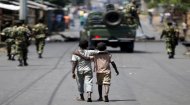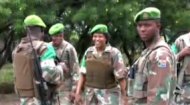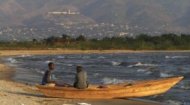|
|
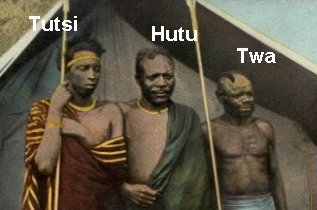
|
Burundi Civil War |
Burundi Civil War |
Burundi Civil War | Burundi Civil War |
Explore
all about the small nation state of Burundi in a series of pictures, videos
and images.
More >
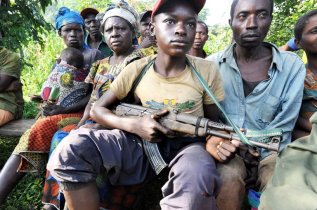
|

|
The civil war in Burundi didn't just rip society apart it devastated the economy in an already poor country with income per person per year dropping from £97.62 in 1993 to just £51.72 in 2003, raising rural poverty from 39.6% to over 70% during the same period, making Burundi the world's poorest country at that time. Healthcare provision was similarly destroyed. Even children were forced to participate in the bloodshed under pain of death. The UN intervened following an atrocity claimed by the (Hutu) Forces of National Liberation (FNL) in 1994 when they murdered hundreds of Tutsis in a UN run refugee camp. Some stability was restored in 1996 when former president and Tutsi Pierre Buyoya took power in another army coup. He and the Burundi parliament agreed a transitional government which saw him sworn in as president on 11th June 1998 and the following week between 15th-21st June the first face to face peace negotiations took place in Tanzania between the government, opposition parties and some rebel groups with Tanzania's former president Julius Nyerere acting as mediator. However the fighting continued with Amnesty International reporting the massacre of hundreds over the following months including a UNICEF official and World Food Program worker whilst assisting in a displacement camp. December 2009 saw Nelson Mandela take over the role of mediator following Julius Nyerere's death on 14th October that year from leukaemia and a tentative peace deal was brokered in August of 2000 that saw a power sharing agreement between the Hutus and Tutsis, however the FDD and the National Liberation Forces (FNL) were not signatories to the agreement. Within a fortnight the FDD was accusing the army of massacring 850 civilians, however fresh talks in Tanzania were called to discuss the accord's implementation as there were many outstanding problems not least who would actually run the country during the transitional period. Against a background of ongoing conflict and calls from all sides for Buyoya to step down, on 23rd July 2001 an agreement was reached that Buyoya would remain as president for the first eighteen months of the transitional government with a Hutu as his deputy followed by a further eighteen month period with a Hutu as head of state with a Tutsi as deputy. This deal was rejected by some Hutu rebel groups and the fighting intensified with hundreds being killed and thousands forced to flee their homes. On 1st November 2001 the transitional government came into being with the Tutsi holding twelve portfolios including defence, finance and foreign affairs, whilst the Hutu held fourteen portfolios including security. The new National Assembly comprise 60% Hutu and 40% Tutsi. However these developments failed to stop the bloodshed and, amongst many other atrocities during this period, a rebel attack on Bujumbura in July 2003 left 300 dead and 15,000 displaced. A further peace accord was signed in November 2003 when President Ndayizeye, who had taken over after Buyoya had stepped down as per the transitional plan, and FDD leader Pierre Nkurunziza signed an agreement to end the civil war whilst at a summit of African leaders with Ndayizeye appointed Minister for Good Governance and the FDD itself becoming a part of the country's government. Significantly, however, the FNL remained opposed to these arrangements and in 2004 killed one hundred and sixty Tutsi refugees living in a United Nations camp at Gatumba near the Congo border in Burundi. This incident led to UN to take a more proactive role in the country when, together with government forces, they began to disarm rebels. This marked the beginning of an uneasy peace and the war drew to a close in 2005, with a new constitution being endorsed in a referendum on 28th February of that year ushering in a formal end to Tutsi hold on power. In the parliamentary elections held later that year in July, the two houses of parliament returned Hutu majorities with Pierre Nkurunziza, from the Hutu FDD group, elected as president by the parliament. The FNL finally officially laid down arms when it signed a peace deal with the government in September 2006. Despite this there have continued to be outbreaks of hostilities. For example in 2008, rebel FNL fighters shelled the capital of Burundi, Bujumbura, killing at least thirty three people. Civil wars rarely come to an absolute end, with those who have lost everything harbouring resentment at the victors and so it has proved in Burundi with an attempted coup in January 2010 and violence both before, during and after the June presidential election of that year with former rebel leader and FNL candidate Agathon Rwasa going into hiding. There have been ongoing reports of the killing by the army of former FNL fighters and the Human Rights Watch has reported since August 2020, there have been several reports of security incidents involving clashes between security forces and armed groups, as well as attacks by unidentified assailants. |
 However within months on 28th November 1966, Micombero staged a military coup and installed himself as president (right with Idi Amin of Uganda on his right and the President of Rwanda on his left.) There followed twenty five years of Tutsi military rule much to the resentment of the Hutu population as only 15% of Burundians are Tutsi with the remaining being of Hutu ethnicity. This period saw a series of military coups and civil insurrections leaving hundreds of thousands of Hutu dead, however at the end of this period, following another coup by Maj. Pierre Buyoya, reforms were instigated to help heal the country's ethnic divisions and elections called.
However within months on 28th November 1966, Micombero staged a military coup and installed himself as president (right with Idi Amin of Uganda on his right and the President of Rwanda on his left.) There followed twenty five years of Tutsi military rule much to the resentment of the Hutu population as only 15% of Burundians are Tutsi with the remaining being of Hutu ethnicity. This period saw a series of military coups and civil insurrections leaving hundreds of thousands of Hutu dead, however at the end of this period, following another coup by Maj. Pierre Buyoya, reforms were instigated to help heal the country's ethnic divisions and elections called. Ndadaye (left)established a pro-Hutu government however appointed Sylvie Kinigi, a female Tutsi (though married to a Hutu), as the Prime Minister in an act of conciliation. His presidency though was to be short lived as he was assassinated along with six of his ministers just over three months later on 21st October 1993 during a failed military coup by disgruntled Tutsi members of the armed forces. In response, the Hutu rose in their masses and started slaughtering Tutsis.
Ndadaye (left)established a pro-Hutu government however appointed Sylvie Kinigi, a female Tutsi (though married to a Hutu), as the Prime Minister in an act of conciliation. His presidency though was to be short lived as he was assassinated along with six of his ministers just over three months later on 21st October 1993 during a failed military coup by disgruntled Tutsi members of the armed forces. In response, the Hutu rose in their masses and started slaughtering Tutsis.